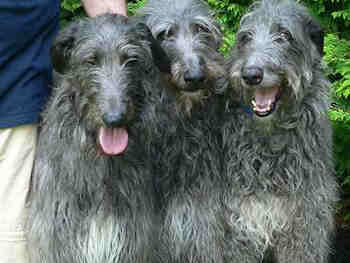Scottish Deerhound
Join Scottish Deerhound Rescue Make a Difference

-
Breed Group : HOUND
-
Origin : SCOTLAND
-
Average Height : 28" - 32"
-
Average Weight : 75 - 110 lbs.
-
Life Span : 8 - 11 years
Photo Courtesy info : Gentle Giants Rescue & Adoption
-
Size
1 2 3 4 5 6 7 8 9 10 -
Energy
1 2 3 4 5 6 7 8 9 10 -
Intelligence
1 2 3 4 5 6 7 8 9 10 -
Ease of Training
1 2 3 4 5 6 7 8 9 10 -
Hypo-Allergenic
1 2 3 4 5 6 7 8 9 10 -
Shedding
1 2 3 4 5 6 7 8 9 10 -
Good with Kids
1 2 3 4 5 6 7 8 9 10 -
Good with Other Pets
1 2 3 4 5 6 7 8 9 10 -
Guard Dog
1 2 3 4 5 6 7 8 9 10




